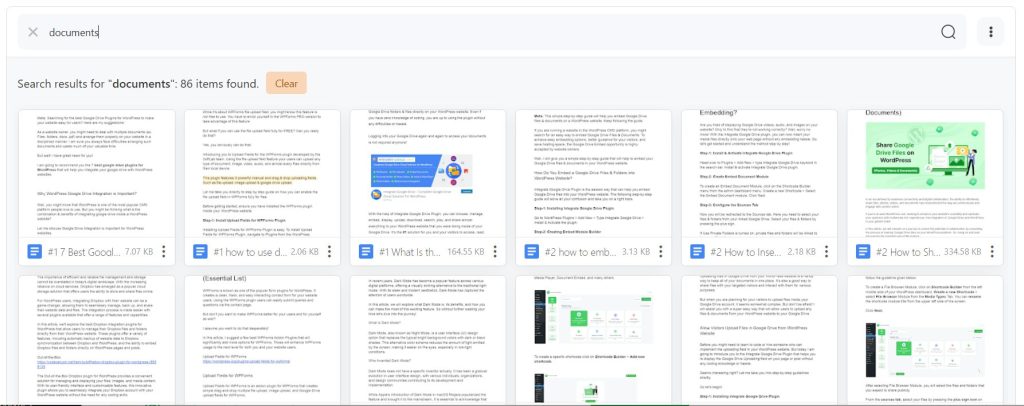Using the File Search module your users can search and browse your Google Drive files & folders from your WordPress website.
Step-1: Choose File Search Module
To create a Search Module, click on the Shortcode Builder menu from the admin dashboard menu. Create a new Shortcode > select the File Search module from the Types tab.
Rename the shortcode title from the top left side of the WordPress dashboard depending on your project type. Then click Next.
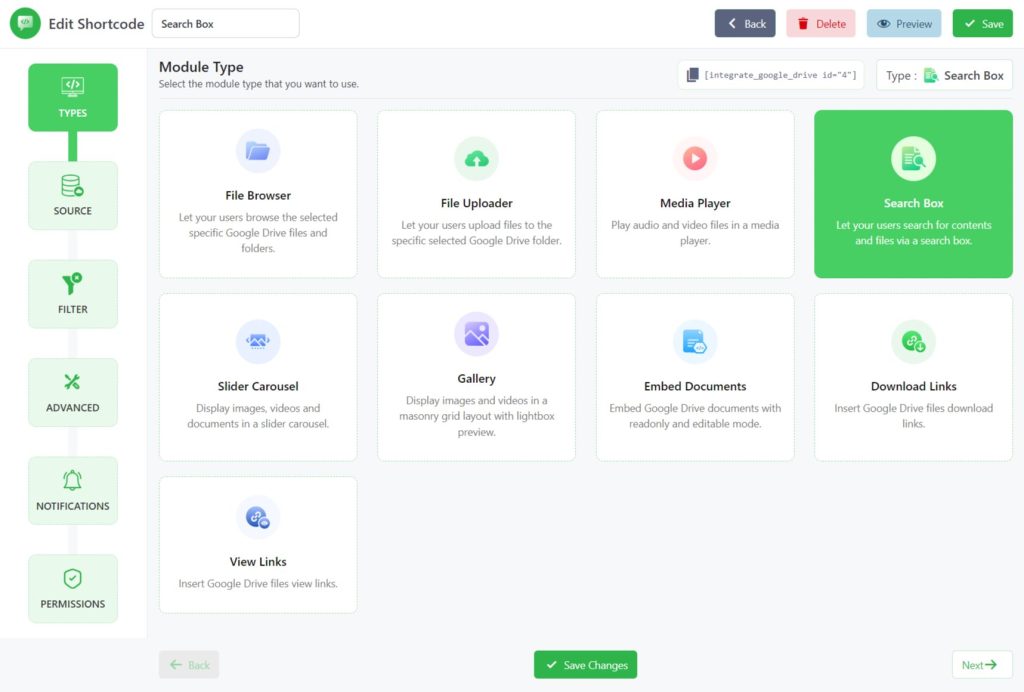
Step-2: Configure the Source Tab
Now you will be directly taken to the Source tab. Here you need to select your files & folders from your linked Google Drive. Select your files & folders by pressing the plus sign.
You will discover your selected files, in the selected files list section of your screen. You can drag them up or down to change their orders.
Users only can search for files and folders that are selected.
You might notice new settings options named All Folders & Files and Use Private Files. Let’s introduce you to them.
- All Folders & Files: If All Folders & Files is enabled, visitors can navigate through all the files & folders, of your all linked Google Drive accounts.
- Use Private Files: On the other hand, if Use Private Files is turned on, search for the private files and folders liked to the user. Click Next.
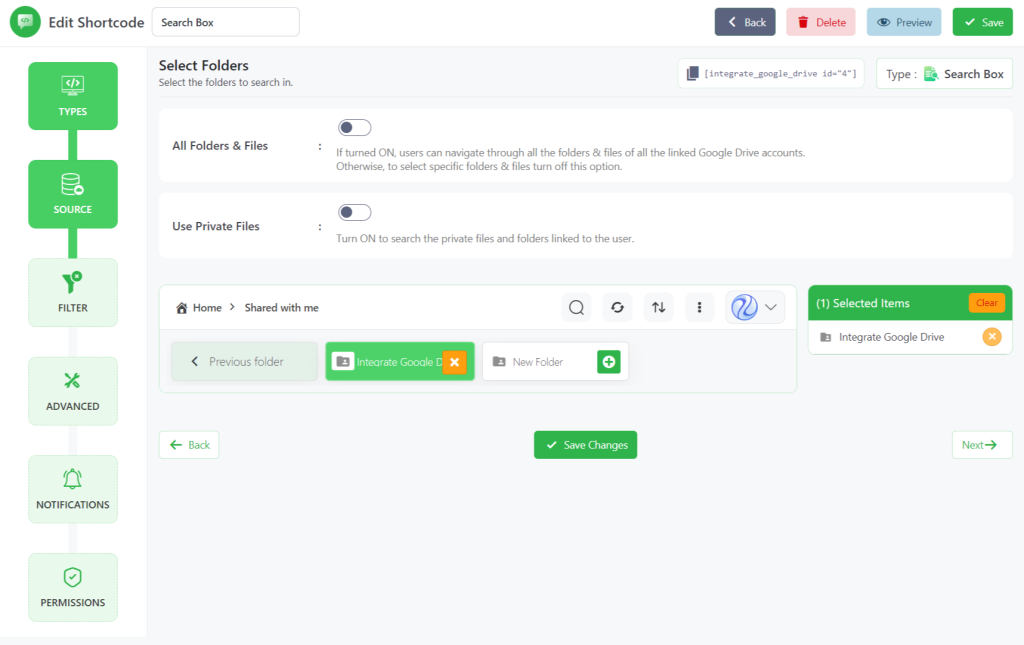
Step-3: Configure Filter Tab
Now you have been taken to the Filter Tab. Where you can customize every file and folder in terms of their different filter settings.
- Show Files: The Show Files option is given to show or hide your files. If it’s enabled files will show, otherwise files will be hidden for the users.
- Show Folders: The Show Folders option is given to show or hide your folders. If it’s enabled the folders will be shown otherwise, the folders will be hidden from the users.
- Allowed Extensions: Enter comma (,) separated file extensions to allow, such as “jpg, png, gif”. Leave empty to show all extension files. When “Allow all” is enabled, exceptions will not be displayed.
- Allowed Names: Enter file and folder names, separated by commas, to display. Leave blank to display all files and folders. When “Allow all” is enabled, exceptions will not be displayed.
- Maximum File Numbers: Enter the maximum number of how many files you want to show. Leave empty to show all files. Click Next.
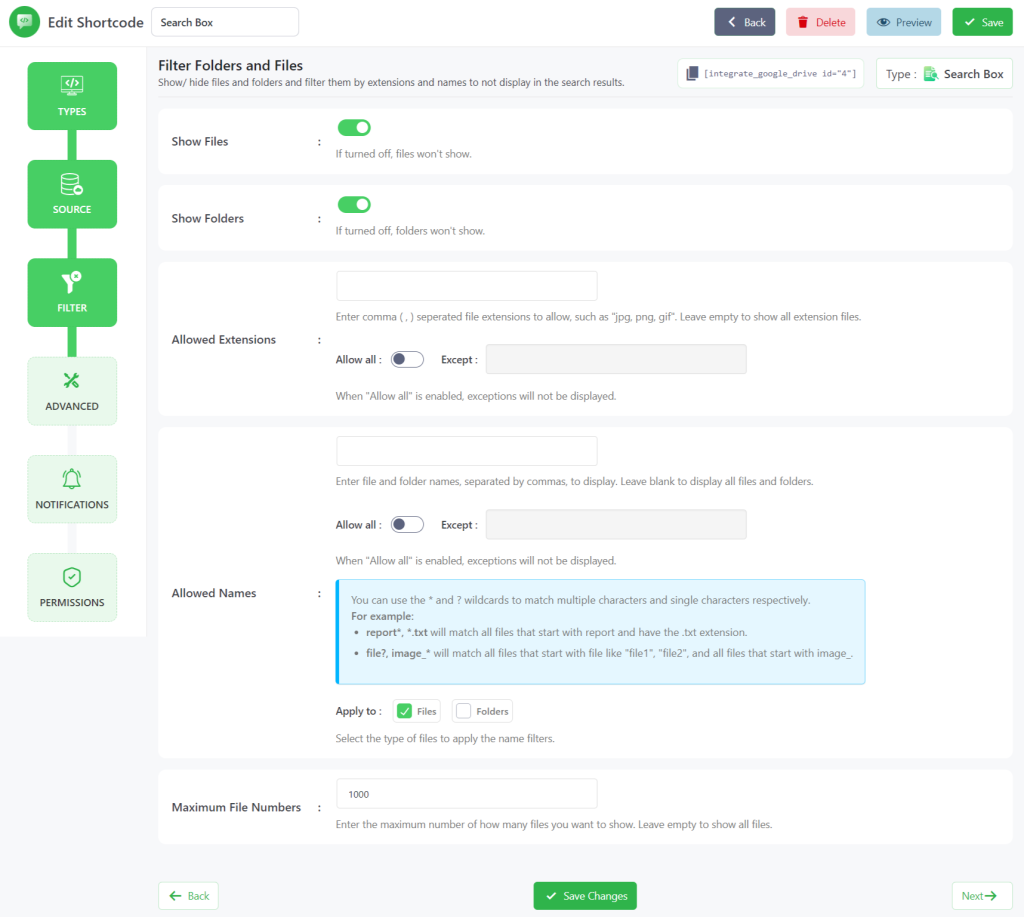
Step-4: Configure Advanced Tab
From the next Advanced Settings, You can customize your file searching module depending on what you are expecting.
- Module Container: Set the module container width and height. You can use any valid CSS unit (pixels, percentage), eg ‘360px’, ‘780px’, ‘80%’. Keep blank for a default value.
- Browser View: Select the file browser view (Grid or List)
- Show Last Modified Field: Show/ hide the file’s last modified date field in the list view.
- Sorting: Using this feature you can sort files by Name, Size, Created Date, Modified Date, and Ascending, or Descending Direction. Select the option you are thinking to implement. Now click Next.
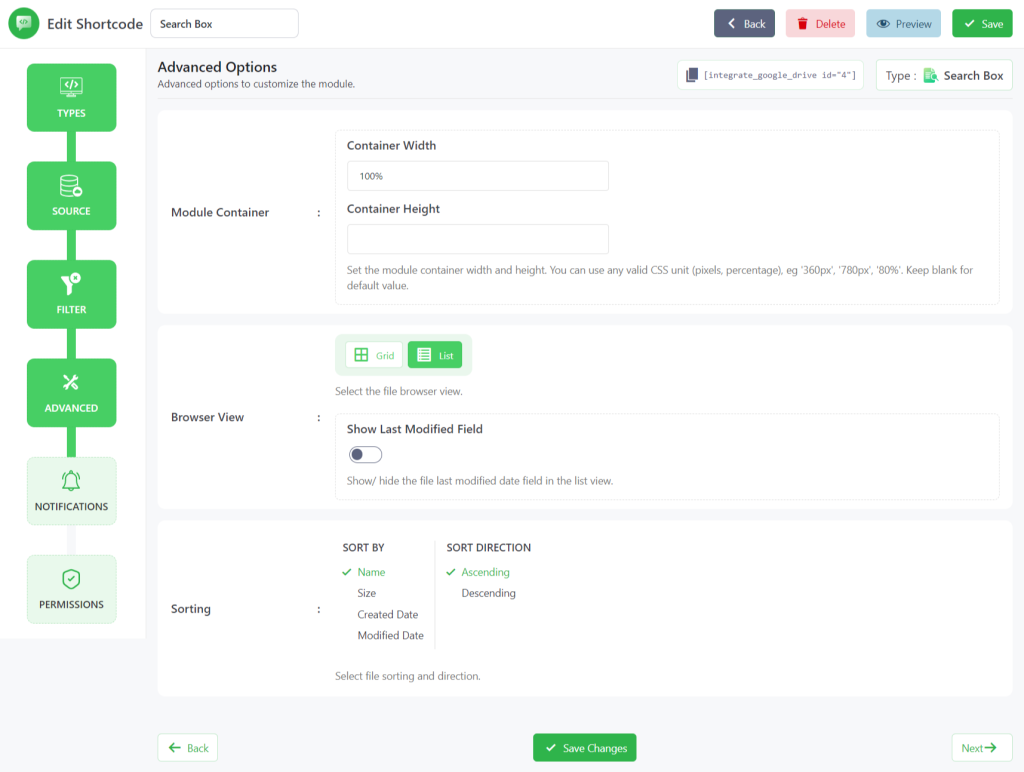
Step-5: Configure Notifications Tab
Now you will be redirected to the Notifications tab where you will customize notification settings configuration.
- Enable Notifications: Enable email notifications to get notified on various user activities (upload, download, delete, etc).
- Download Notification: Receive an email notification whenever files are downloaded through this module.
- Search Notification: Receive email notifications whenever someone searches for media files through this module.
- Notification Recipients: Enter the email address where the notifications will be sent. Add multiple email addresses by separating them with a comma (,). You can also set the below placeholder tags as the email recipient. Ex: %admin_email%, %user_email%, %linked_user_email%
- Skip Current User Notification: Enable to skip the notification for the user that executes the action.
Step-6: Configure Permissions Tab
Now you will be redirected to the Permission tab. Here you will mostly work on permission-related tasks for your File Search module.
- Download: Allow users to download files.
- Zip Download: Allow users to download multiple files at once.
- Show File Size Field: Show/ hide the file size field in the file list.
- Filter Users & Roles: Select users & roles who can download files.
- Allow Comments: Allow users to comment on files while they view the file in the lightbox preview.
- Comment Method: Select the comment method you want to use.
- Filter Users & Roles: Select users & roles who can comments on files.
- Display for: Using this option you can allow permission of your files to everyone and logged-in users. You can also filter manually by user roles or any specific users.
- Show Access Denied Message: Show a message to users who don’t have access to the module. You can enter a message you want to show to users who don’t have access to the module.
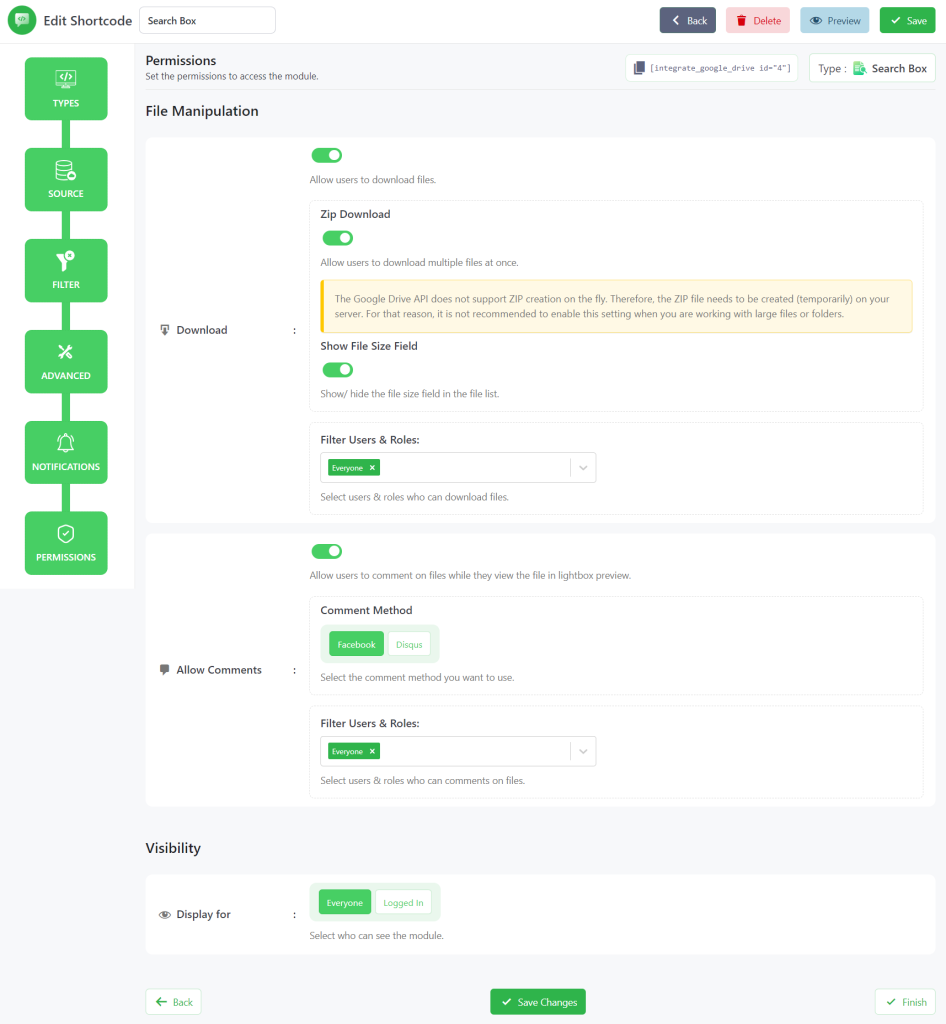
Click Save Changes and copy the shortcode from the shortcode builder page.
Now you can use the shortcode to allow users to search Google Drive files from your WordPress Website, any posts, or pages.
Output
This is how the search module will look like once you embed it inside any of your pages or posts.
